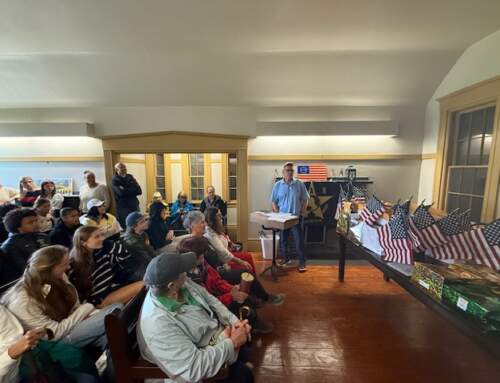by Rick Winterson
Lately, a persistent rumor has been circulating around South Boston: That the opening of the long-awaited Curley Community Center has been delayed further by the presence of a dozen or so piping plovers, who migrated onto the Center’s beach in April.
Members of Boston’s City Council have informed us that the Center’s opening actually depends on receiving various permits, which are expected “Soon”. We have heard from environmentalists that a “Beach Management Plan” needs to be approved as well. Here in South Boston, two fenced-off areas have been established for the piping plovers that arrived on the Curley Center beach. In the meantime, the completed Curley Center is undergoing a thorough cleaning, but no specific opening date has been set. The necessary paperwork by itself will likely take a few more weeks.
We are not sure if piping plovers will delay the Curley Center’s opening even more, but there’s no question that they are a species at risk. A sign posted prominently on M Street beach graphically requests, “Help us protect a very special bird”. Check it out for yourself. In addition to describing the bird, the piping plover sign also refers to “fences” and “protected areas”. As far as we know, the piping plover is the only New England bird that requires a separate, protected section of beach to nest on.
Perhaps unfortunately, piping plovers make their nests by scratching a hole in the sand above the waterline. That’s an essential part of the plovers’ mating rituals, but these really aren’t “nests” at all – the eggs sit on the sand after being laid. Plovers usually migrate here in April and hatch their eggs in May. The young plovers fledge and leave the nest during the month of June. Right now, piping plover migration is at its height. When they land on a beach, the law requires this be reported and a “protected area” created for them. Massachusetts beaches from Duxbury to Wollaston have already been marked off; beaches all along the North Shore to the New Hampshire border are next. In the case of Wollaston, two large sections amounting to more than an acre have been fenced off. However, the word “fence” is deceptive. The protected areas are actually formed by small, triangular signposts in the sand, connected by waterproof twine – these can be hard to spot.
Piping plovers are larger than a common sparrow and smaller than a sandpiper. They are light gray with white breasts. They have orange legs and an orange bill with a black tip, and they are marked with a black neck ring and “eyebrow”. Their call sounds like a little bell, which leads to their name “piping”.
Piping plovers are actually widespread in the U.S. – along many northeastern beaches, on riverbanks in the Midwest, and all around the Great Lakes. But their numbers are small – less than 10,000, and the mating pairs are far less than that. In the Midwest and in Maine and New Hampshire, piping plovers are listed as “endangered”. Massachusetts has made some progress with piping plovers – around here they are listed only as “threatened”. Among their most dangerous enemies are dogs on the beach and feral cats – Castle Island had a large colony of feral cats about a dozen years ago.





